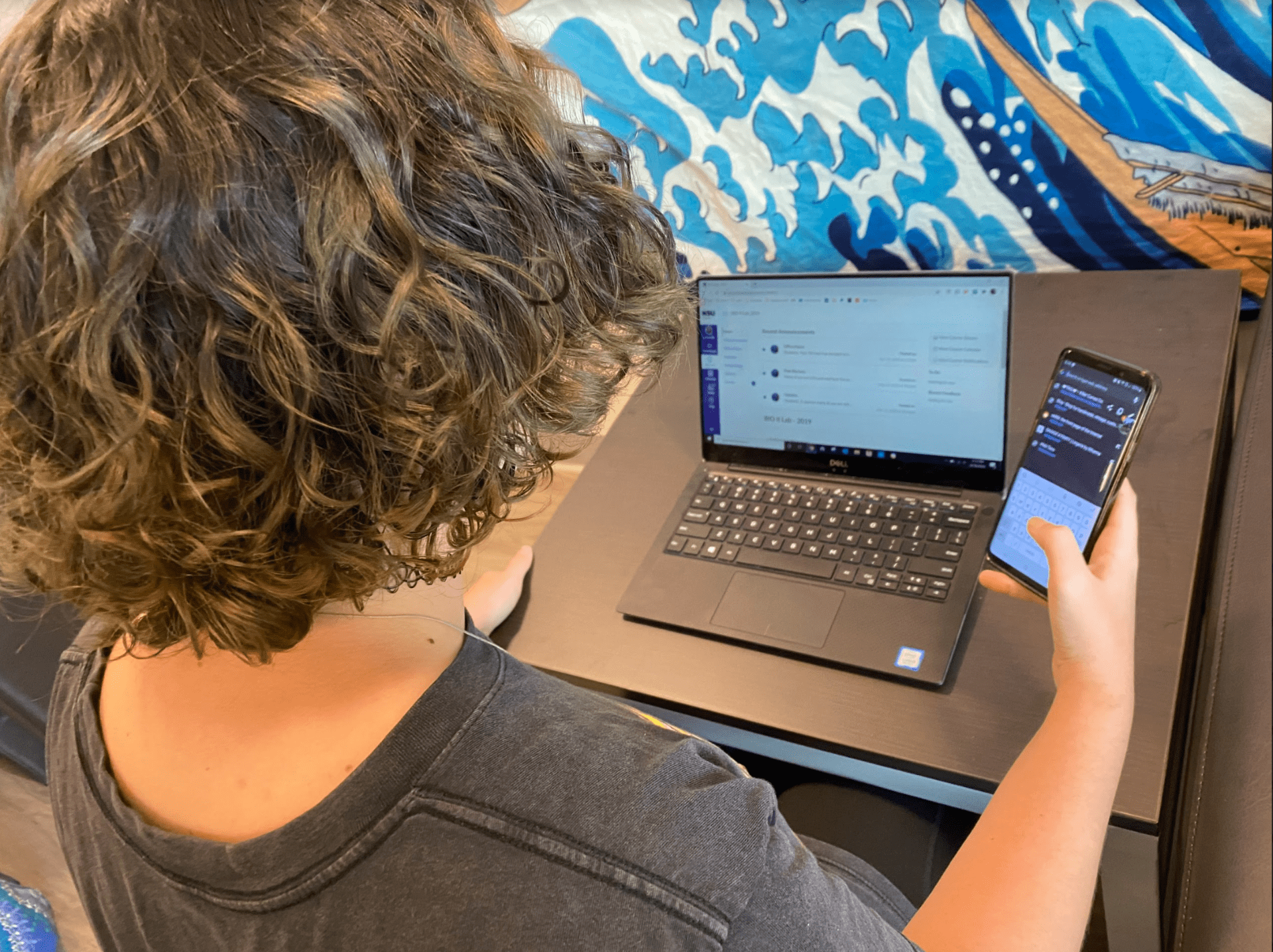Between bingeing Netflix, Zoom class sessions and catching up with friends through FaceTime, the average person has racked up a lot more screen time since the beginning of the pandemic.
This is no surprise after the stay-at-home order was put in place and the only way to contact and stay up to date with the outside world was through technology. Social media has helped to bridge the gap that was left by strict social distancing guidelines, but has also proven to be harmful if not used cautiously. The idea of additional hours added to our screen time reports is nothing to be embarrassed or anxious about. The problem lays with how we spend our time online, rather than how much time is spent online.
Staying connected online is important for us to stay informed, which can decrease situational anxiety. There are countless points to stay updated on, including revisions to the pandemic guidelines, details on the election and reports on racial tensions across the nation. Being in the loop is essential, but you don’t want to become overwhelmed with information. The second major public crisis that we’re currently dealing with, according to the World Health Organization, is an infodemic.
WHO describes this as ‘‘an overabundance of information — some accurate and some not — that makes it hard for people to find trustworthy sources and reliable guidance when they need it.”
So, while staying informed can decrease anxiety, reading too many sources of (sometimes contradicting) information can have the opposite effect.
How can you tell if you need a break from your screen? Jennifer Sincore, a Henderson counselor, recommends a self-analysis.
“A lot of it comes down to self-monitoring,” she said.
Sincore explains that if you feel that scrolling through social media offers some temporary entertainment, but produces long term negative feelings, then it’s time to cut back. Although you may be tempted to simply delete social media completely to minimize screen time, it may be best to take a more gradual approach. Try using software that measures what apps and websites you’ve been devoting the most time to and decide which you’ll actively decrease your time on.
It’s common to use your phone to scroll through social media as a break from school work behind a computer screen, but the best option is a visually stimulating intermission. Sincore recommends making use of non-screen time breaks. Anything as simple, but effective, as just taking a walk around the block would do.
So, if you are feeling overwhelmed or simply want to decrease your screen time, put down your phone, take a walk and use the time to reconnect to other important things in your life.


